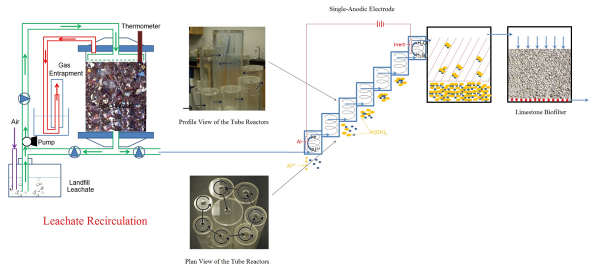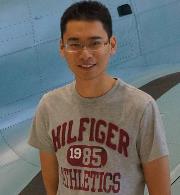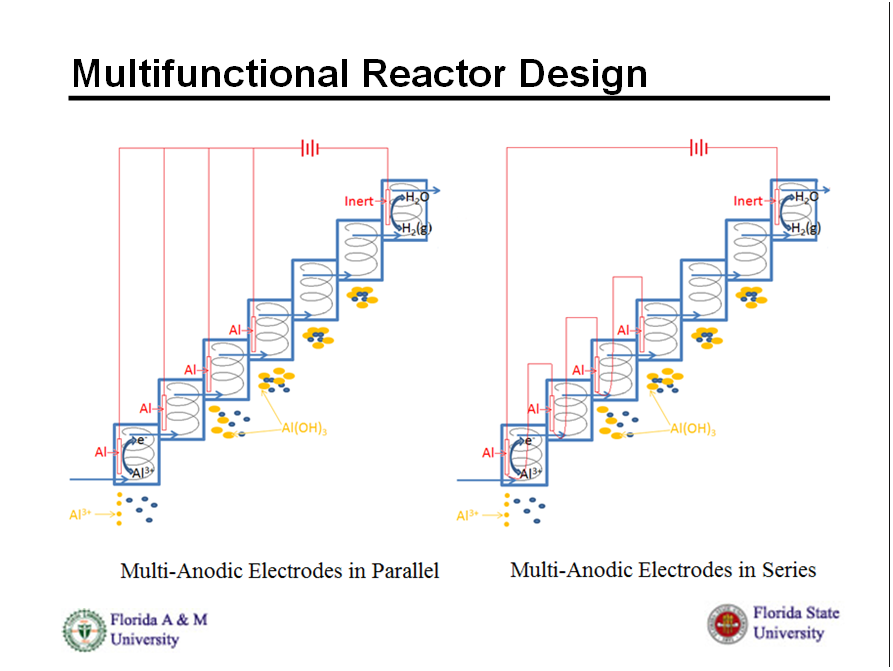
|
Gang Chen, Ph.D., P.E. |
|
Professor |
|
Multifunctional Reactor (II) |

|
Multifunctional Energy- and Space-Saving Reactor for the Treatment of Landfill Leachate. Year II. Incorporation of Electrocoagulation |
|
Objective: Besides organic contaminants, nutrients, heavy metals and arsenic, high concentrations of chloride also become a concern of landfill leachate management in Florida. It is a great challenge to treat landfill leachate with high concentrations of these contaminants at the landfill sites. In our prior research, we designed a multifunctional energy- and space-saving reactor and tested the designed reactor for the treatment of landfill leachate with high ammonium, chloride and heavy metal contents. It has been demonstrated that this unique design provides an efficient and energy- and space-saving means of on-site management of landfill leachate. To further reduce the chemical costs and simplify the operation, electrocoagulation will be incorporated into the multifunctional reactor in this proposed research with further consideration of arsenic and phosphorus removal. In addition, limestone biofiltration will be added to ensure the decomposition of residual organic contaminants.
Rationale: Landfilling is widely adopted as one of the most economical processes for solid waste disposal. At the same time, landfill leachate is also a great environmental concern owing to its complex composition and high concentrations of contaminants. Landfill leachate characteristics present a high variation due to several factors such as the composition of the solid waste, waste age, site hydrology, landfill design and operation, sampling procedure, and interactions of leachate with the environment, etc. In Northwest Florida, besides high organic contents, other major concerns of landfill leachate include ammonium released from hydrolysis of proteins of the solid waste, high concentrations of chloride from ashes of waste-to-energy processes, iron from reduction of iron-rich soil with organic decomposition, and arsenic from decomposition of chromated copper arsenate (CCA)-treated wood, etc. In our first year study, we designed and tested a multifunctional energy- and space-saving reactor for the removal of ammonium, chloride and iron from landfill leachate. The multifunctional energy- and space-saving reactor can achieve multiple functions of landfill leachate treatment depending on the treatment requirements. This reactor also makes the on-site leachate treatment possible and subsequently can reduce the current high costs of off-site leachate disposal means such as transporting landfill leachate via tanker trucks to local wastewater treatment plants. To further reduce the operation costs and enhance organic removal of the multifunctional energy- and space-saving reactor, electrocoagulation and limestone biofiltration will be incorporated. The electrocoagulation will make coagulation possible without the addition of coagulants and the limestone biofiltration will biologically decompose residual organic contaminants. In addition, the electrocoagulation process also promotes arsenic and phosphorus removal when iron is used as the electrode. |
|
Students Working on the Project |

|
Kein Vu, Ph.D. Student at Florida State University |
|
Boya Wang, Master of Science Student at Florida State University |
|
Sponsored by the Hinkley Center for Solid and Hazardous Waste Management. Duration: November, 2015 to October, 2016 |






